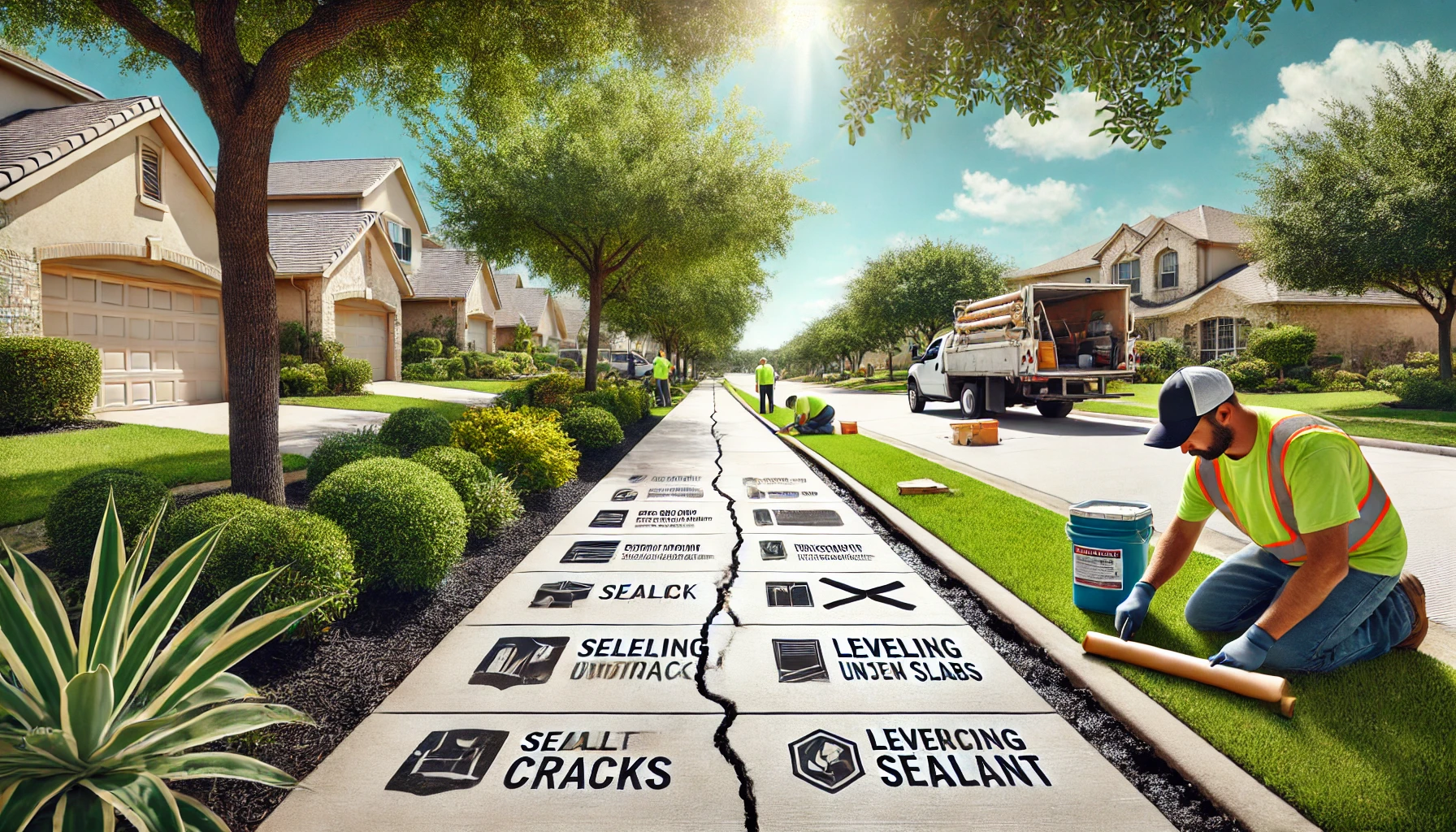Why Sidewalk Maintenance is Important
Maintaining sidewalks is not just about aesthetics; it’s a matter of public safety and legal compliance. Cracks, uneven surfaces, and other sidewalk damages can lead to trips and falls, causing injuries and potential lawsuits. According to the National Safety Council, falls are one of the leading causes of unintentional injuries in the U.S. Proper sidewalk maintenance can significantly reduce these risks.
Common Sidewalk Issues in San Antonio
San Antonio’s unique climate and soil conditions can lead to several common sidewalk issues. Here are some of the most prevalent problems:
Cracking
Cracks are often caused by temperature fluctuations, tree roots, and soil movement. In San Antonio, where the weather can vary significantly, this is a common issue.
Uneven Surfaces
Uneven surfaces can result from poor installation, tree roots, or ground settling. These are not only unsightly but can also be hazardous.
Spalling
Spalling occurs when the surface layer of concrete peels away, often due to freeze-thaw cycles or poor initial construction. This can make the sidewalk look worn and aged.
Preventative Maintenance Tips
Preventative maintenance is the key to extending the lifespan of your sidewalks and ensuring they remain safe for public use. Here are some essential tips:
Regular Inspections
Conduct regular inspections to identify any early signs of damage. Look for cracks, uneven surfaces, and spalling. Early detection can prevent minor issues from becoming major problems.
Seal Coating
Applying a seal coat can protect the sidewalk from water infiltration, which can lead to cracking and spalling. Seal coating should ideally be done every 3-5 years.
Root Barriers
If trees are causing sidewalk damage, consider installing root barriers. These barriers can prevent roots from growing under the sidewalk and causing it to lift.
Proper Drainage
Ensure that water drains away from the sidewalk. Poor drainage can lead to water pooling, which can weaken the concrete and cause cracks. Installing proper drainage systems can mitigate this risk.
Professional Repairs
DIY Tips for Minor Repairs
While some repairs require professional intervention, minor issues can often be addressed with DIY solutions. Here are some tips:
Filling Small Cracks
Small cracks can be filled with a concrete filler or sealant. Clean the crack thoroughly, apply the filler, and smooth it out with a trowel. Allow it to dry according to the manufacturer’s instructions.
Smoothing Uneven Surfaces
For minor uneven surfaces, use a concrete grinder to level the area. This can be a cost-effective way to smooth out small bumps and prevent tripping hazards.
Addressing Spalling
For spalling, remove the loose concrete and apply a resurfacing compound. This can improve the sidewalk’s appearance and prevent further deterioration.
Seasonal Maintenance
In San Antonio, seasonal changes can impact sidewalk conditions. Here are some maintenance tips specific to different seasons:
Spring
Inspect for any damage caused by winter weather. Clean the sidewalks to remove debris and apply a fresh seal coat if needed.
Summer
Check for any signs of heat-related damage, such as cracking due to expansion. Ensure proper watering of nearby plants to prevent root damage.
Fall
Prepare for cooler temperatures by inspecting and repairing any existing damage. Clear leaves and other debris to prevent water pooling.
Winter
In the rare event of ice or snow, use a non-corrosive de-icer to protect the concrete. Avoid using metal shovels, which can damage the surface.
Conclusion
Maintaining sidewalks in San Antonio is crucial for public safety and urban aesthetics. By following these preventative maintenance tips, you can extend the lifespan of your sidewalks and minimize the risk of accidents. Regular inspections, proper drainage, and timely repairs are essential. Remember, while DIY solutions can address minor issues, significant damage should always be handled by professionals. Stay proactive and keep your sidewalks in top shape for a safer, more beautiful San Antonio.

